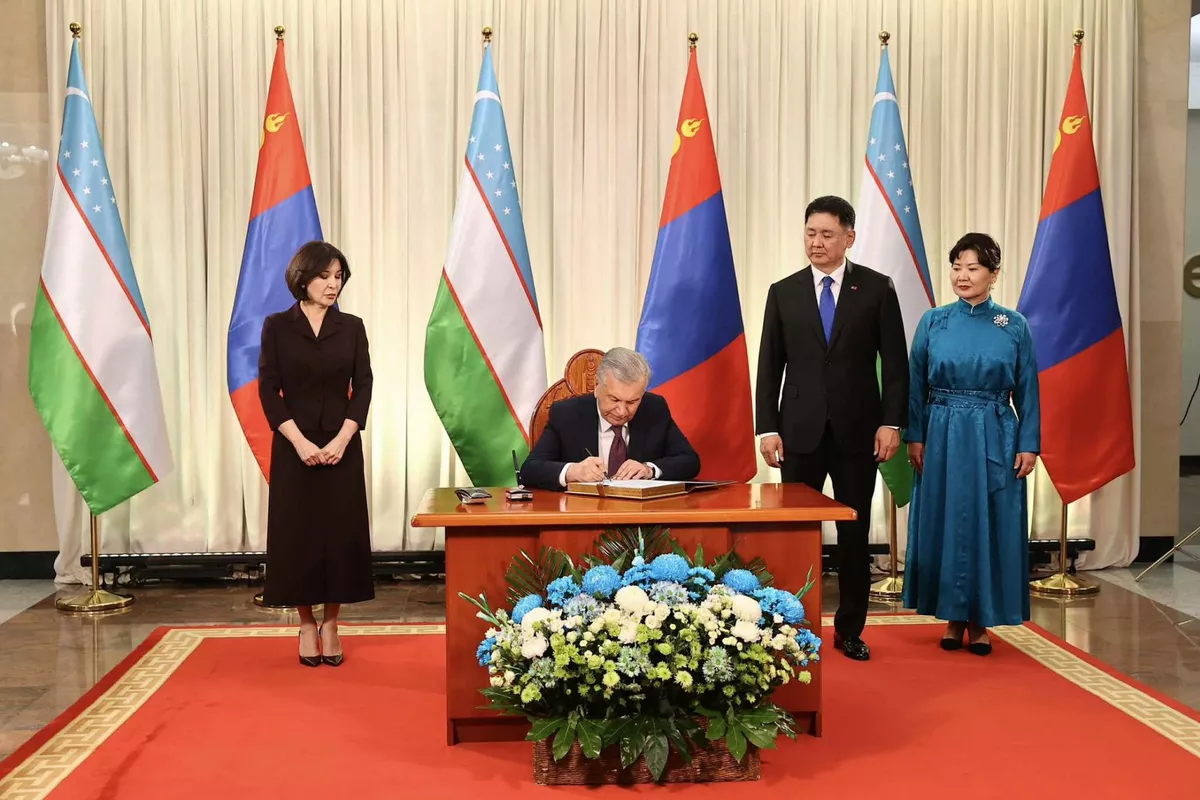
Photo credit: Office of the President of Mongolia
Since 2023, Mongolia has been actively strengthening its political ties with Central Asian countries, viewing this not only as a strategic move but also as a way to reconnect culturally and historically.
Following the democratic revolution of 1990, Mongolia fully regained its sovereignty and faced a new challenge: how to redefine its foreign policy in a rapidly changing global environment, The Caspian Post reports citing The Diplomat.
In response, two fundamental strategic documents were adopted in 1994 - the National Security Concept and the Foreign Policy Concept - which laid the foundation for Mongolia’s independent engagement with the international community. Both were later revised - in 2010 and 2011, respectively - to better reflect shifting geopolitical realities.
The 1994 Foreign Policy Concept marked a historic turning point. It outlined Mongolia’s intent to pursue an autonomous and balanced foreign policy. According to scholar and senior diplomat Tumurchuluun Guudai, this new direction was based on four key principles: desovietization (moving away from Soviet influence), deideologization (removing ideological bias from diplomacy), democratization (aligning with democratic values), and decentralization (reducing centralized control over foreign relations).
These changes aligned Mongolia with other post-communist countries that were transitioning to democracy and seeking to redefine their international roles. It also signaled a desire to modernize and open up to the world - not only diplomatically, but economically and culturally.
During this period, debates emerged about Mongolia’s geopolitical identity. In her book “Mongolia’s Foreign Policy: Navigating A Changing World,” renowned American Mongolist Alicia Campi described two competing schools of thought. One saw Mongolia as a Central Asian country, tied to its steppe heritage and shared Soviet past with the region’s newly independent states. The other school viewed Mongolia as part of Northeast Asia, and was eager to connect with dynamic, modern economies like South Korea and Japan. In the years that followed, Mongolia focused more heavily on Northeast Asia, prioritizing economic development.
In 2011, Mongolia updated its Foreign Policy Concept and introduced the term “Third Neighbor” for the first time - referring to advanced countries beyond its two immediate neighbors, Russia and China. The updated document identified five multipillar foreign policy directions: Russia and China (Mongolia’s only immediate neighbors), “third neighbors” (including the United States, Japan, EU, India, South Korea, and Turkiye), other Asian countries, the United Nations and its agencies, and developing countries (including the G-77 group and the members of the Non-Aligned Movement).
This more diversified and pragmatic framework positioned Mongolia as a bridge nation, connecting regions, ideologies, and cultures across Eurasia. Within this context, Mongolia’s renewed engagement with Central Asia is now becoming more visible - not just as a strategic pivot, but also as a form of cultural and historical reconnection. Since 2023, Mongolia has been actively deepening its political relations with Central Asian countries at an unprecedented pace, within the framework of its third neighbor policy.
In July 2023, President Sadyr Japarov of Kyrgyzstan paid a state visit to Mongolia. He was followed by President Kassym-Jomart Tokayev of Kazakhstan in October 2024, President Serdar Berdimuhamedov of Turkmenistan in June 2025, and President Shavkat Mirziyoyev of Uzbekistan, also in June 2025. From the Mongolian side, President Khurelsukh Ukhnaa visited Tashkent in June 2024, attended the Shanghai Cooperation Organization (SCO) Summit in Astana in July 2024, and conducted a state visit to Ashgabat in October 2024.
These visits reflect a clear shift: Central Asia is becoming a strategic pillar in Mongolia’s multivector foreign policy. Some scholars have already labeled this movement a “Pivot to Central Asia” - a shift driven by both pragmatic interests and long-term strategic goals. For Mongolia, closer relations with Central Asia offer several advantages: expanding its circle of political allies, diversifying trade routes and business partnerships, and reinforcing its cultural and historical ties across the steppe
However, for this pivot to succeed, infrastructure will play a crucial role. The development of overland trade corridors is essential to translate diplomatic goodwill into real economic cooperation.
In October 2024, Kazakhstan’s Ministry of Transport proposed opening a new highway corridor to Mongolia via Russian territory. Despite media coverage, no official response has been reported from Russia, suggesting that further diplomatic coordination may be required.
In contrast, more tangible progress came during Mirziyoyev’s 2025 visit. At that time, it was announced that a new freight corridor connecting Uzbekistan and Mongolia, via Kyrgyzstan and China, had been successfully tested. Cargo arrived in just eight days - a strong indication of the growing logistical cooperation between Mongolia and Central Asia.
Mongolia’s active outreach to Central Asia reflects a deeper strategic shift. The country is increasingly positioning itself as a “dual-regional state” - one that connects both Central Asia and Northeast Asia across the vast Eurasian landmass.
According to unofficial sources, Mongolia may revise its Foreign Policy Concept once again. If this happens, how Central Asia is defined in the new strategic framework will be an issue of significant interest.
Mongolia’s turn toward Central Asia is not just a series of state visits or trade agreements - it is a strategic realignment that reflects deeper changes in the world and within Mongolia itself. As a democratic, landlocked nation between great powers, Mongolia’s ability to adapt and connect across regions may well define its role in 21st century geopolitics.
Share on social media